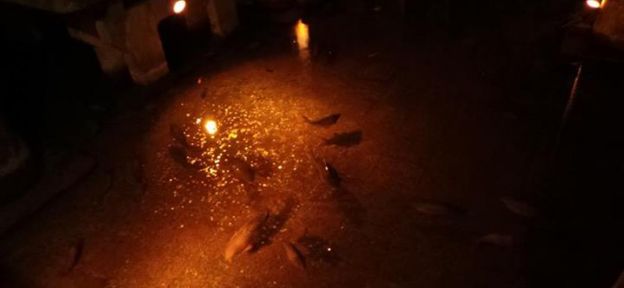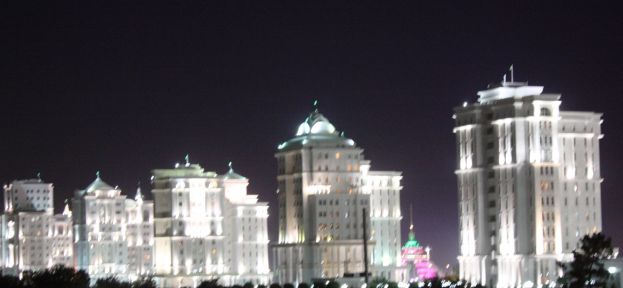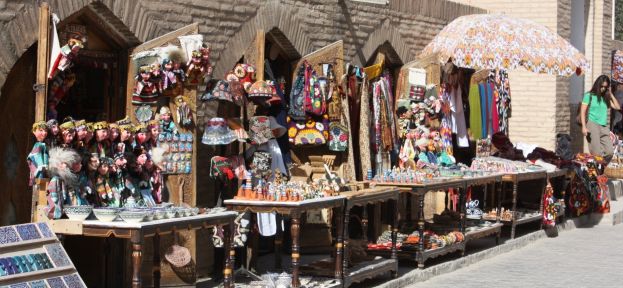Kyrgyzstan Mountains to Istanbul - Itinerary
Bishkek, Kyrgyzstan to Istanbul, Turkey - Itinerary
People and History
The Silk Road; the trade route where Marco Polo travelled, writing his famous ‘Book of the Marvels of the World’
Asia Minor, Persia, and Central Asia; here Alexander III of Macedon, defeated Darius III of Persia and created the largest empire of the ancient world, which only lasted till his death at the age of 32
Iran; birthplace of the revered Ruhollah Khomeini, known in the West as Ayatollah Khomeini
The battlefields of Gallipoli; where Mustafa Kamal Ataturk (father of the modern Turkish State) cut his teeth as an army officer in the field against the Anzac forces in WWI.
The Silk Road
More correctly its 'Silk Routes,' a term coined by Ferdinand von Richthofen (uncle of the fighter ace Red Baron), naming the trade routes from China to Turkey - and on to Europe. The name does not refer to a road or specific route, as the trade was also undertaken by sea as well as land over vast distances. The route was disrupted during the rise of the Mongol Empire but was reinvigorated by sail during the rise of the European powers and is running again today – by ship, road and rail.
People and Religion
The region has every significant religion in the world, living in relative harmony, including; Muslim [Shiites, Sunnis & Sufis], Jews, Orthodox Christians, Zoroastrians, Buddhists, Shamanists Confucianism, Taoism - and others
Architecture
Big grand mosques, mud cities, palaces, fortresses and ruins. Desert architecture using the wind and water in ways to keep houses cool which predates western air-conditioning systems by thousands of years – by using natural flows of wind and water in complex systems, all built by hand. The systems of cooling and water supply are still unmatched by modern western environmentalists using computers and heavy machinery.
Geography
Central Asia has, the Karakum, amongst other deserts, with vast grassy plains of the Steppe to the north; running into the forests and mountains high rolling plains and lakes of Kyrgyzstan towards China in the east
Uzbekistan is only one of two ‘doubly landlocked’ countries in the world – that is, it’s surrounded by landlocked countries.
We cross Asia Minor (the Anatolian plateau). Turkey was originally called Asia by the Romans and from this province the whole of Asia, as we now know it, took its name – though no one really knows what the name actually means.
Animals
Bactrian camels - (two humps) and a lot of horses.
The Asia Overland Route - Bishkek to Istanbul
CENTRAL ASIA – Kyrgyzstan Kazakhstan, Uzbekistan &Turkmenistan
Horses ridden by a nation of horsemen with incredible skill on the saddle – riding before the age of five.
Kyrgyzstan – Weeks 1 - 3
A land of high mountain passes, grassy plains, alpine lakes & yurts, all in the Celestial Mountains. A strong Chinese influence.
Highlights - High altitude mountains and lakes
As big as England with just 5 million people; there is space to wander. We start in the capitol Bishkek. Visit Lake Issyk-Kul - a massive mountain lake with magnificent scenery & loads of activities to choose from. To the Karakol Jeti Orguz Region to hike in the Terskay Ala-Too Mountains. Ala-Archa Nature Reserve, here you can go trekking to the edge of glaciers. Lake Song Kol - Traditional yurt stay, horseback riding and go trekking. Visit the caravanserai of Tash Rabat -.
Kazakhstan – Week … 4
One of the larger countries in Asia - it extends into Eastern Europe; the people are a mix of Mongolian and Russians. The capital Alamaty; is named after apples, which is where they first grew.
Highlights – the size of the place; the 9th largest country in the world
We cross to Kazakhstan and Aksu-Dzhabagly Nature Reserve the oldest nature reserve in Central Asia; stunning scenery of green valleys, rushing rivers and snowcapped peaks. Look out for the Himalayan brown bear.
Uzbekistan – Week …4 - 5
The heart of the ancient Silk Road
Highlights – the beautiful cities of Khiva, Bukhara and Samarkand are the main highlights not only in Uzbekistan but in of the whole of Central Asia
Onto the capitol Tashkent and east; after transiting Kazakhstan.
We cross the desert and the Amu Darya River, (known in ancient times as the Oxus), to Bukhara. Its old centre with easy to get lost in narrow winding streets, mosques, medieval royal fortress and a bazaar complex; it’s a UNESCO World Heritage Site. Samarkand was once the most populous city in the world; its 2,500 years of history old rivaling Rome in importance; now its attractions are really big colourful mosques, markets and the impossibly big public square called ‘Registan’ or sandy place in Persian. This was made when public squares were for public announcements and executions.
Khiva town is one of the best preserved of the in Central Asia the Old Town is within a massive mud brick fortress. Climb the towering minarets and sit in the tranquil old mosques.
Turkmenistan – Week 6….
The recently passed dictator had the capital city Ashgabat made in white marble. The rest of the country is a beautiful empty dessert, with nomads in their yurts.
Highlights - Ashgabat, Darvaza Gas Craters, Konye-Urgench
The economy is run off its vast reserves of oil and gas which lies beneath Central Asia’s largest desert; the Karakum or Black Desert.
Kanye-Urgench on the northern border is a ruined town with old monuments. It was the scene of one of the biggest massacres in human history by Genghis Khan; his massacres started here and led to the death of over 70 million people; some 17% of the world population at the time.
We visit Darvaza Gas Craters, or the ‘Doors to Hell’, it’s a drilling operation gone wrong, which opened a massive hole in the desert; from which the natural gas came out – it was lit to get rid of the dangerous gas and it’s been burning for 40 years.
Last stop is the capital Ashgabat, with enormous monuments and extravagant buildings made entirely of white marble.
Iran - Week …6 – 7
Iran; the Persia Empire is today the Islamic Republic of Iran. Though women do need a form of chador (covering) to enter Iran, it does not have to be black. A colourful scarf and trench coat are good enough……Though this country its often thought of by some westerners as an ominous anti-western state; the people are friendly; they like talking to tourists and within live many religious groups. Not everyone is actually Persian; there are; Turks, Baluchi, Arabs, Kurds, Jews, Christians, Zoroastrians, Baha’i, Nestorians and others, all living amicably. The architecture is some of the best in the world
Highlights - Esfahan, Shiraz, Persepolis, Yazd, Great Salt Desert, Caravanserais, Mashed
In the north of Iran we visit the holy city of Mashed after leaving Turkmenistan Before crossing Dasht-e-Kavir; the almost uninhabited Great Salt Desert to Kermin and visit the castles in the desert.
The Silk Road follows in the footsteps of Marco Polo to Yazd. The fourth largest ethnic group in Iran after Muslims, Christians and Jews are the Zoroastrians - Yazd is their hometown. Here there is a Tower of Silence and a Fire Temple, which has had its fire burning for two and a half thousand years. Zoroastrians bury their dead in the ‘sky’; leaving the bodies out in their Towers of Silence to be eaten by birds. The city is built mainly from adobe mud bricks and is the best example of old Persian architecture; with wind catching towers cooling the houses and an ancient network of underground canals bringing water to the town from mountains
In the south is Shiraz; considered to be Iran’s best city with; mausoleums, the colourful covered Vakil Bazaar. Shiraz has a large Christian and Jewish population
Just outside of town are the ruins of Persepolis; the ancient capital of Persia. It was burnt to the ground by Alexander the Great - in a typical Macedonian evening of drunken debauchery. That’s how the Macedonians behaved in ancient times
Heading north, we pass through; Qom, Kasham and Abyaneh on the way to Isfahan. Here we’ll spend a few days in the old capital of Persia - beautiful mosques, squares, the stone arched Khaju Bridge with its royal pavilion in the middle, palaces with gardens and caravanserais
Tehran is one our route; big and smoggy. The best things to see here are the Treasury of the National Jewels with diamonds, the Peacock Throne and the Mausoleum of Ayatollah Khomeini
To Qazvin with massive domed Cisterns, this once stored and cooled the city’s water. Relax in one of the subterranean bathhouses.
Towards Turkey, we enter north western Iran to Tabriz. Wander through the bazaar the Blue Mosque and Elgoli Park.
Armenia – Week 8
From Tabriz we head north to Armenia. Over the next two weeks we will cross this small former Soviet republic and its neighbour, Georgia. For this section the trip will be exploratory in nature, being the first time we have travelled this route in this way, so expect the unexpected and be ready for an adventure.
Armenia, a country of just over 3 million people, the size as Belgium. In the South Caucasus; stunning mountains, rich verdant landscapes, rich and varied history, and a unique and strong sense of nationhood with an international importance that belies its small size and location, almost ‘hidden’ amongst larger neighbours in Turkey and Iran.
After crossing into Armenia we continue north past the Shikavogh Reserve and following a bush camp we reach the country’s capital Yerevan. This will be our base for three nights; strolling the streets of the city’ central area the combination of Armenian and Soviet architecture shows the country’s more recent history while the nineteenth-century Blue Mosque reminds us that we are still in a part of the world where Islamic influences and cultures are prevalent. There is also the option of a day trip to view Mt Ararat a stunning snow-capped volcano to the south-west of the city. Though the volcano itself is in Turkey, we are able to see it and explore the beautiful mountainous Ararat region while still in Armenia. It is also possible to visit Yerevan’s famous brandy distillery for a tour and of course to sample the national drink!
Leaving Yerevan we head to Sevanavank, a monastery complex on the shores of Lake Sevan that dates back to the ninth century. Formerly situated on an island, following the draining of the lake as during the time of Stalin’s rule, the monastery is now sat at the end of a small peninsula and is a picturesque spot well worth a short detour. Leaving Sevanavansk we continue north to Georgia.
Georgia – Week 9
After a bush camp in rural Georgia we arrive in the capital, Tbilisi. Sat on the River Mtkvari and surrounded by mountains on three sides with a combination of modern and historic architecture, this calm and photogenic city is our base for the next couple of days. Strolling the streets and people-watching in the many imperious squares of the city, with their mix of Russian, Classical and Soviet architecture, peppered with churches and cathedrals, is a pleasant way to spend at least one of our days here.
Leaving Tbilisi our next stop is Telvai, a decent-sized town to the north-east, sat on a hilltop with views across a wide valley with towering, snow-capped peaks visible in the distance. Telavi is the principal town of the Kakheti region, famous for its vineyards and wineries. Wine has been produced in Georgia since 4000BC and the industry has played a significant role in the country’s history ever since, as wine plays an important role in Georgian culture and society. Here we have the option of taking a wine tour to find out more about the history of the area, why wine production has been so important, and of course to try some ourselves!
Telavi itself is a fascinating and relaxing place to spend a couple of nights with many good restaurants and cafes, and not far from the town there are other sites well worth a visit, such as the monastery of Akhali Shuamta, and the small village of Ikalta and its Church of the Transfiguration which dates from the 8th Century BC.
We then drive west towards Gori stopping on the way at the Uplistsikhe Caves, a remarkable subterranean complex of buildings built into the hillside, with origins as a religious and trading centre just off the Silk Road. At one point its population is estimated to have reached as many as 20,000, living and working in and around the caves. We have some free time to scramble across the rocky paths and find our way through the long-abandoned buildings and try to imagine what it would have been like living in such a unique and unusual place all those years ago.
Gori is a small city that played an important role as a military stronghold with strategic significance throughout the Middle Ages and has been occupied at various points by many different powers throughout its history, giving the city a blend of flavours and influences that have by now become a recognisable feature of our Caucasus adventure. The city is famous as the birthplace of the Soviet leader Josef Stalin; the main avenue running through the city centre and the main town square bear his name. It is possible to visit the Stalin Museum and see the house where the former dictator was born and grew up. This makes for an intriguing experience, with Stalin’s rule and its consequences still very much within living memory.
From Gori we reach Vardzia, a remarkable monastery built into the hillside with great importance in Georgian history through its association with the revered Queen Tamar who ruled over its construction in 1185 AD. The site was only used and populated for a relatively short period, being ravaged and then disused following an earthquake in 1283 and then attacked by first the Persians in 1551 and then the Turks in 1578, and subsequent earthquakes and flooding have seen much of the original site lost, but it remains a fascinating site and well worth visiting; carved into the side of a steep cliff Vardzia is a great place to explore and take some memorable and unusual photos!
Continuing west our next stop is the Safara Monastery, a still-functioning seminary of the Georgian Orthodox Church constructed in the 10th Century AD, with Byzantine-style frescoes and a dramatic location on the edge of an imposing gorge. Leaving southern Georgia we then return to the country’s more populated central region and drive to Kutaisi where we can rest up after some bush camps and enjoy a bed for the night, as well as check out the local cafes and restaurants. We then make our way to the Black Sea coast and follow it to our final stop in Georgia, Batumi. We will spend a couple of nights in this port city that has had an important role as a trading post from the second century BC when it was used by the Ancient Greeks as a commercial base. Today it is a modern city, and in recent years has seen a building boom with some bright and glitzy hotels constructed along the seafront.
Leaving Batumi we cross the border into Turkey as we leave the Caucasus.
Turkey - Weeks 10 – 11
Highlights Istanbul, Gallipoli Battle Fields, Troy, Ephesus, Pamukkale, Cappadocia.
At Nemrut Dagi you see the huge statues scattered on the mountain. These huge statues were carved from solid rock by King Antiochus.
In central Turkey is Cappadocia, a region formed from volcanic ash. In the region the large village of Goreme has churches and monasteries carved into the rock with Christian frescoes and valleys full of chimney shaped houses.
Derinkuyu is a massive underground city, five story’s deep and miles wide, tunneled beneath the plains it is large enough to hold 15,000 people. Here you can buy some of the best value Turkish carpets and pottery in the world.
Pamukkale is an ancient flow of mineralised water that has created a hillside of white limestone curtained terraces, with ancient spa pools.
Ephesus is the largest and best-preserved Roman city on the Mediterranean coast. Nearby are the remains of the Temple of Artemis, one of the seven wonders of the ancient world, though only a few columns remain.
Troy. The city was made famous by; Helen of Troy, Paris and Achilles plus the Trojan Horse with a wooden replica now on site – it’s worth a look, though nothing like the one in the film
We cross the Dardanelles by ferry from Asia to Europe and Gallipoli; famous for the allied Anzac WWI invasion, a sea landing designed by Winston Churchill to sail through the Dardanelles water way to Istanbul. The plan was to run the royal navy ships up the Dardanelles to bombard Istanbul, forcing Turkey out of the war, hopefully shortening WWI. You can wander the bleak remains of the battlefields and trench networks.
We finish the trip in Istanbul, old Constantinople on the Bosporus. Must sees are; the Covered Bazaar, the biggest and oldest covered market in the world, the Topkapi Palace, home of the Sultans and harems of the Byzantium & Ottoman Empire, the Blue Mosque and Santa Sophia; a beautiful church converted into a beautiful mosque.
























_adaptiveResize_624_288.jpg)
_adaptiveResize_624_288.jpg)
_adaptiveResize_624_288.jpg)
























 Print this Page
Print this Page